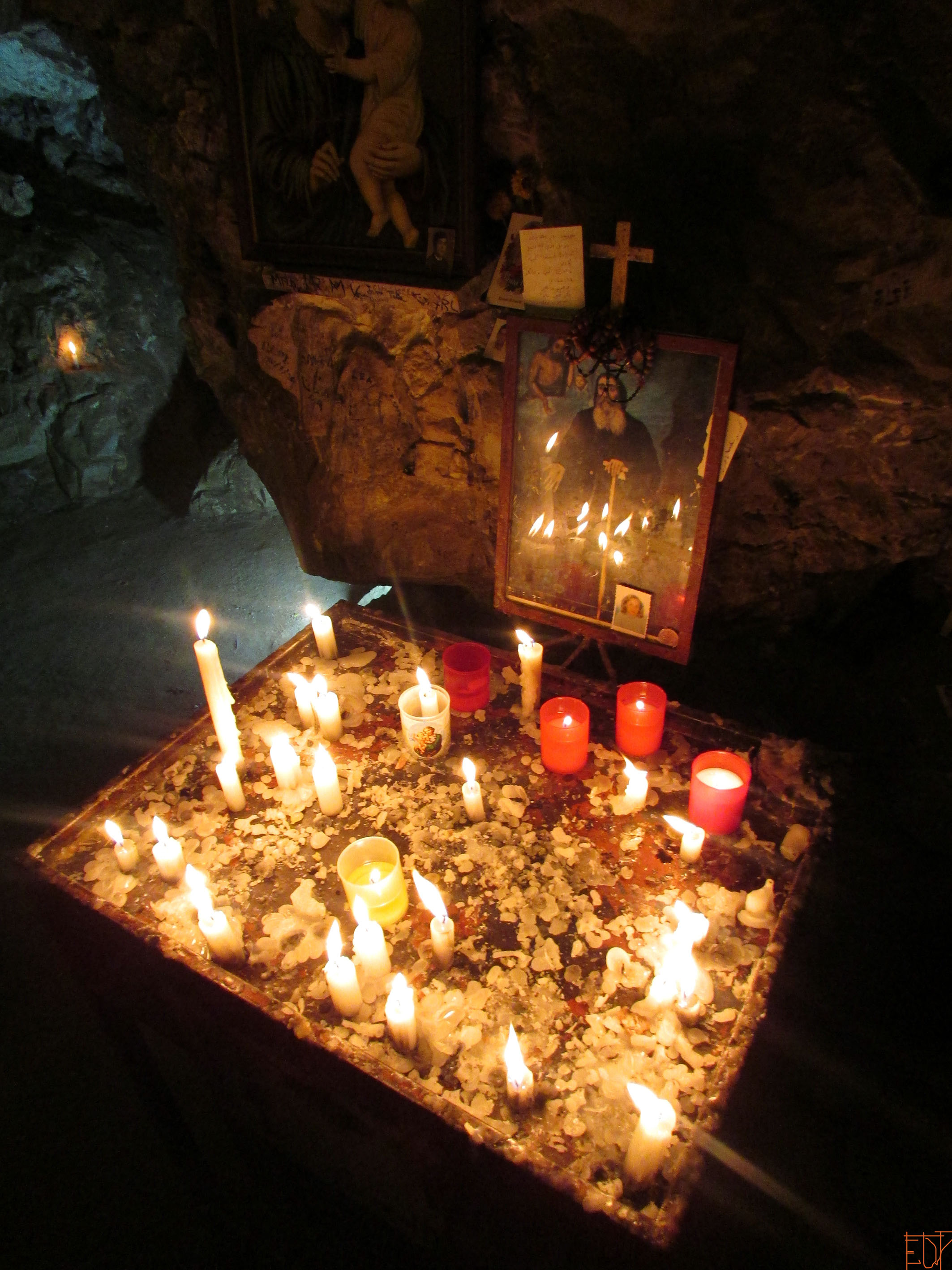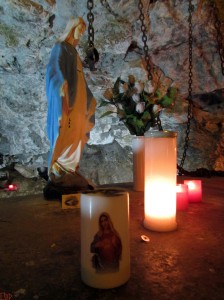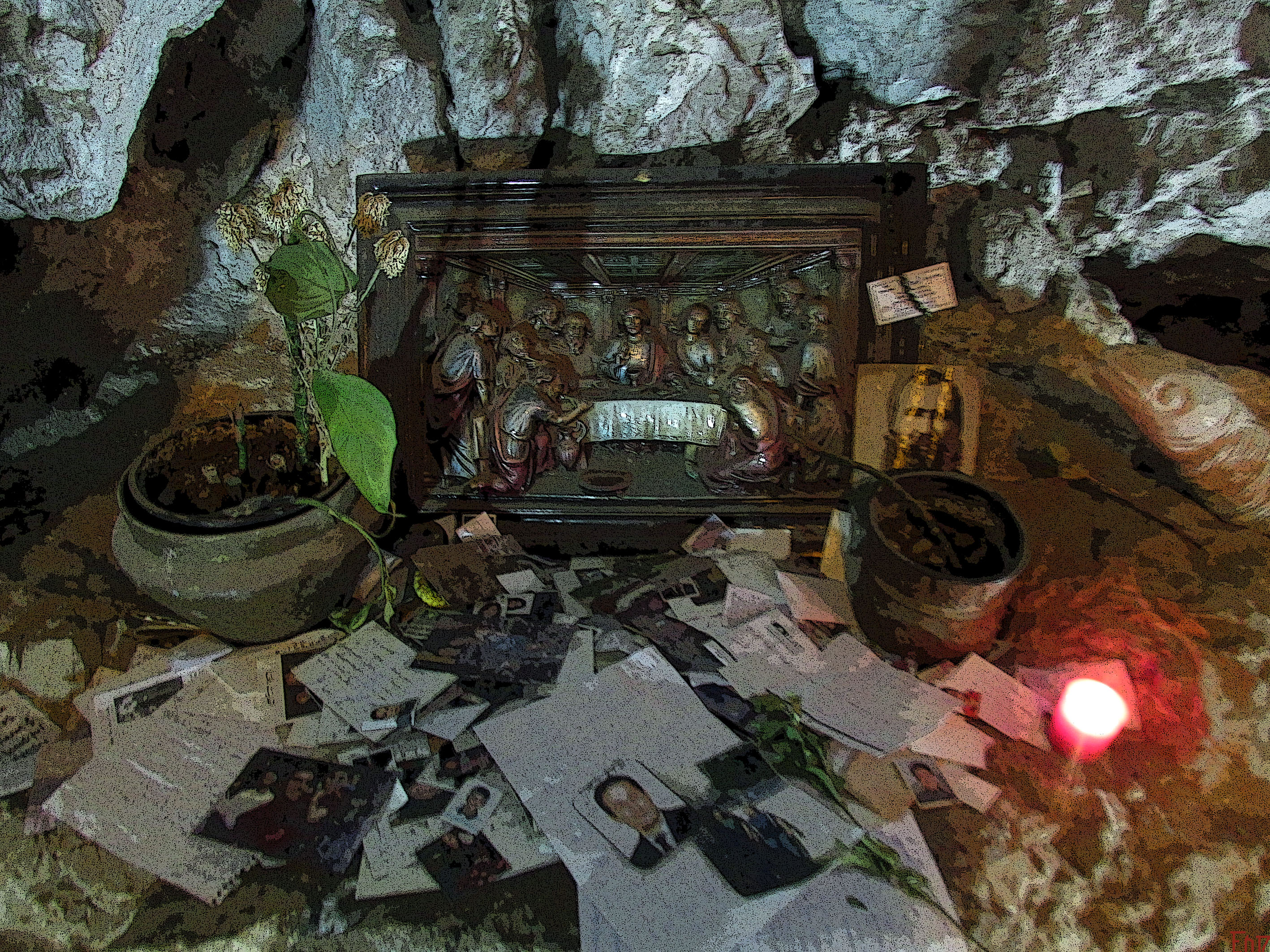
The Cave of St. Anthony in Lebanon (Photo: Emily O'Dell)

Chains in the cave (Photo: Emily O'Dell)
I have found both freedom and safety in my madness; the freedom of loneliness and the safety from being understood, for those who understand us enslave something in us…
― Khalil Gibran, The Madman
While seeking some fresh air and serenity recently in the mountains of Lebanon at the Monastery of St. Anthony, I visited a cave that has long served as a place of healing for the mentally ill. Because Saint Anthony himself reportedly battled the forces of darkness through prayer and seclusion in a desert tomb, this cave in Qozhaya is considered a sacred shelter for anyone suffering from emotional or mental distress.
When I stepped inside of the cave, the first thing my eyes noticed–after adjusting to the dark–was a number of chains hanging over the stone altar. Until the end of the 19th century, these chains were placed around the necks of the mentally ill who visited the cave in search of a clear mind and cure. On a visitor’s third night in the chains, it was believed that Saint Anthony would appear to cast out any affliction. However, in the absence of a vision, a person might spend months locked in the chains, praying to St. Anthony to be freed from suffering.
Taking the heavy chains in my hands, I tried slipping one of them around my neck–to see how it felt. Though I didn’t have a vision of St. Anthony, I did imagine the “patients” over the centuries who had been placed in those chains in the dark, and I thought of those suffering from mental illness who are being “treated” with chains today (though not in a “sacred” context), in places like Indonesia, Somalia, and Ghana. As I put the chains back down on the altar, I noticed a number of written prayers and passport-size photos in a corner–left behind by recent visitors yearning to be healed. While the modes of treatment in Lebanon have changed over the centuries, the afflictions still remain…

Leaving prayers behind (Photo: Emily O'Dell)